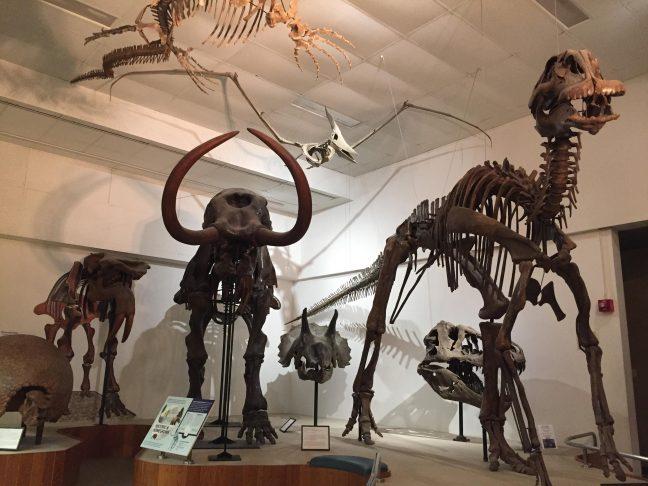University of Wisconsin researchers discovered a small ankle bone in Wyoming sparking a reconfiguration of the understanding of Dinosaurs, their origin and the widely-accepted theory that the earliest dinosaurs originated in the southern hemisphere. Not only does this discovery break ground in the scientific community at large, but it also pushes the boundaries of how paleontological digs benefit the surrounding community.
In 2013, research scientist at the UW Geology Museum Dave Lovelace and a team of undergraduates — on a dig in Wyoming — found a small bone belonging to a newly discovered species, Ahvaytum Bahndooiveche. After years of soil dating, it was identified as the oldest dinosaur in the northern hemisphere, according to SciTechDaily.
“It was like looking for a needle in a haystack, but we ended up finding a whole pincushion full of needles,” Lovelace said.
The discovery of this species — which is about the size of a chicken, according to SciTechDaily — is helping to shape a new story of what happened millions of years ago. This discovery brings into question the origin story of dinosaurs, Lovelace said.
A discovery of this kind simultaneously calls into question vastly accepted hypotheses as well as creates avenues for further, more informed research, Lovelace said.
The tiny ankle bone has an impact not just in paleontology but also helps Lovelace and his team continue to give undergraduate students invaluable experiences.
“The fact that we can give these students such an incredible opportunity is a huge part of the continuity of our research,” Lovelace said. “Undergrads who helped to uncover some of these fossils have gone on to do their graduate work on them, here and elsewhere. Finding a new dinosaur sets a precedent to continue such work.”
The proximity of the dig, compared to research in the Southern Hemisphere, creates a more accessible learning experience for undergraduate students and aids in the creation of future research with a wider scope of understanding, Lovelace said.
The nature of paleontology is holistic, which enables students to hone multiple skills simultaneously.
“Paleontology combines all the ‘ologies,’” Lovelace said. “From chemistry, biology, ecology and geology. Students from our lab have gone on to do incredible research in all of these fields. It is not just STEM but STEAM — even artists have benefitted from such experiences.”
Beyond this, Lovelace finds ways to incorporate sociality and culture into his research. He accomplishes this through a partnership with Tribal Elders and students on the Wind River Reservation, whose elders gave Ahvaytum Bahndooiveche its name, meaning “long-ago dinosaur,” Lovelace said.
Ahvaytum Bahndooiveche’s discovery is a catalyst for new research and discovery, but Lovelace and his team’s research methods allow for holistic educational experiences while simultaneously creating the blueprint for respecting the land on which these discoveries occur.


